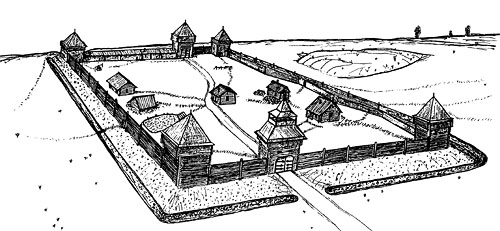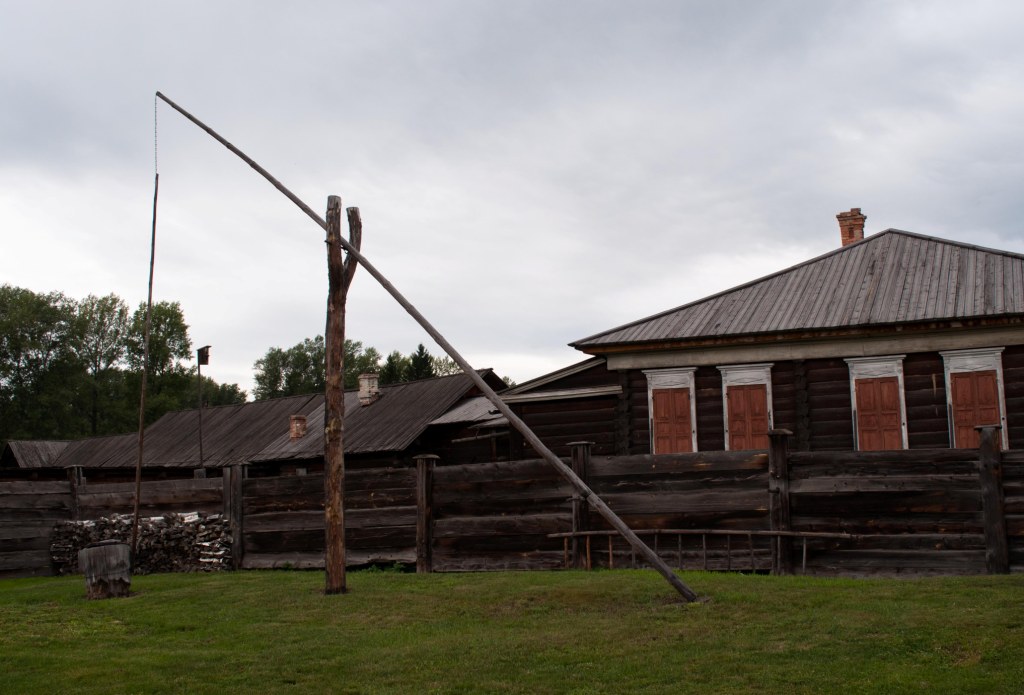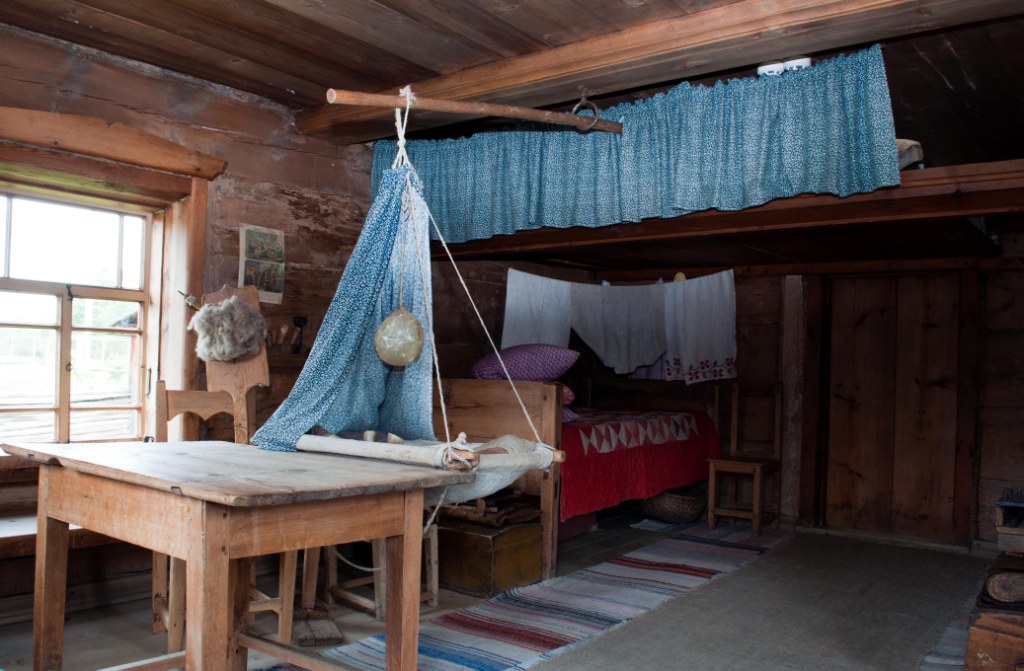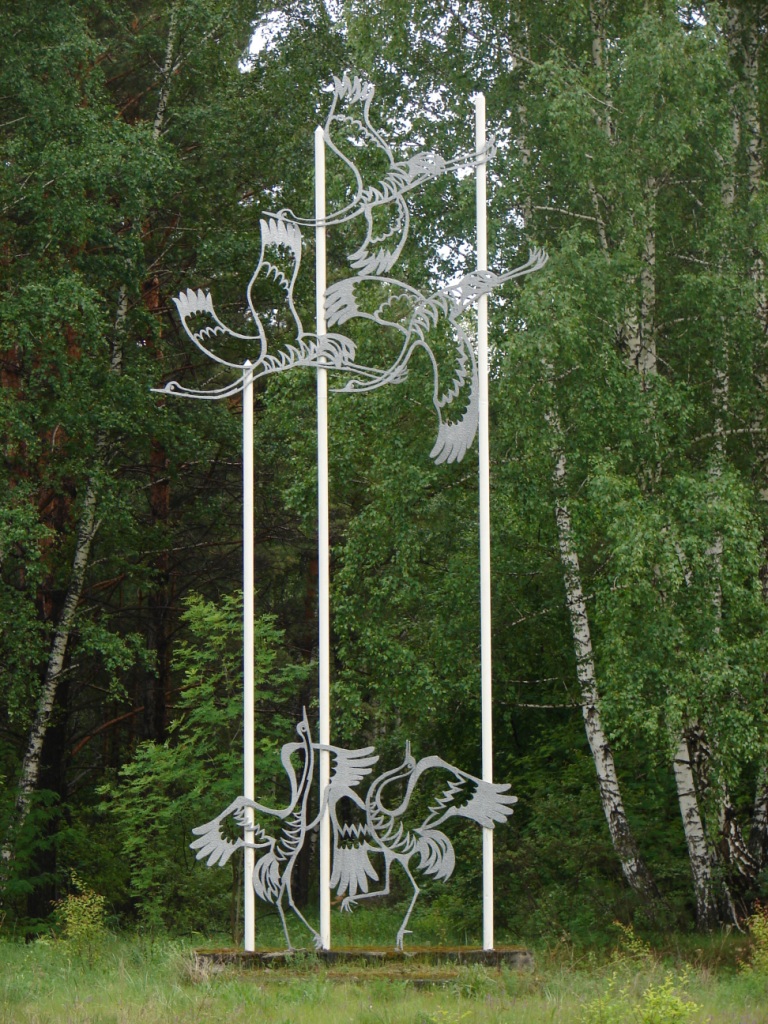How to reach us
117 Uritskogo Str.
Krasnoyarsk, RUSSIA
- e-mail:
- info@sayanring.com
- Open hours:
- Monday-Friday 10 am-7 pm
- Sat 11 am - 4 pm
- Sun - day off
Shushenskoye
General info
Sights
 Sayansky stockaded town is situated on the right bank of Yenisei, not far from Sayansk village in Krasnoyarsk region. This stockaded town is one of several well preserved monuments of Russian fortification in Siberia. The research works of its remnants is a unique case of such a full research of a Russian archaeological object.
Sayansky stockaded town is situated on the right bank of Yenisei, not far from Sayansk village in Krasnoyarsk region. This stockaded town is one of several well preserved monuments of Russian fortification in Siberia. The research works of its remnants is a unique case of such a full research of a Russian archaeological object.
The place where the southernmost stockaded town of Yenisei basin was located still can be seen nowadays from the road leading to Sayano-Shushenskaya hydroelectric power station. After the lawsuit about the construction of the town in 1717-1720 it was used only by the Cossacks.
Now the Cossacks intend to make a museum complex in Shushensky district - to restore Sayansky stockaded town.
In the beginning of XIX century the town lost its military-political meaning and was abandoned. It stopped existing by the year of 1825. The majority of constructions were demolished and used for building the neighboring Cossack village which was named Sayanskaya. During the next two centuries Sayansky stockaded town and Sayanskaya Cossack village were the nearest Russian inhabited points to the geographical centre of Asia. Nowadays the remnants of the town and the village represent the whole archaeological and ethnographic complex.
Despite the fact that there are only the low parts of the walls remained, the plan of the town can be easily seen. There was a kitchen (small parts of animals' bones and kitchenware), a washing place (the remnants of a burnt broom and a lot of river stones - the former furnace), a place for treating fish or storing tackle (stone plummets and fish scales) situated near the northern wall.
At present the Russian academy of science department in Siberian federal district is negotiating with federal and regional authorities on the question of reconstruction Sayansky stockaded town as a unique object of culture and history.
 The Shushenskoe federal, historical and ethnological museum-reserve is a unique open air museum complex. The museum founded in 1970 was based on the two memorial houses that had previously served as a museum. It also included Lenin memorial sites in the nearby forest and several houses in Yermakovskoe village (45 kilometers from Shushenskoe) where Lenin's comrades lived in exile.
The Shushenskoe federal, historical and ethnological museum-reserve is a unique open air museum complex. The museum founded in 1970 was based on the two memorial houses that had previously served as a museum. It also included Lenin memorial sites in the nearby forest and several houses in Yermakovskoe village (45 kilometers from Shushenskoe) where Lenin's comrades lived in exile.
The whole project was made by a large team of qualified historians, architects, ethnologists, museum specialists, restorers, designers, and skilled carpenters who came from the different regions of the country. The interiors are designed to show some typical aspects of everyday life and the main occupations of the villagers. Supplementary occupations are also shown: hunting, fishing, tanning, wicker - work, tar distillation, making of barrels, traditional Russian footwear, ropes, wheels, carts, sledges and fishing tackle. Among the buildings and other items which form the museum's collections more than 80% are authentic products of the traditional culture of Siberian peasants in the late 19th and early 20th century.
So it was quite natural that in the beginning of the 1990ies as a part of the country's far reaching political and economical changes, the museum renounced its historical-revolutionary orientation and concentrated its activities upon the field of ethnology.
 A visit to the museum begins with a house featuring an exhibit on history of Shushenskoe which dates back to 1740ies. It remained a remote village for a long time, situated far from big cities and the railroad - a convenient place for the tsar government to keep its opponents in isolation. Among those in political exile here there were members of the Decembrist revolutionary conspiracy in the early 19th century, an organizer of oppositional study groups, Polish rebels, members of the populist terrorist group "Narodnaya volya" and social democrats.
A visit to the museum begins with a house featuring an exhibit on history of Shushenskoe which dates back to 1740ies. It remained a remote village for a long time, situated far from big cities and the railroad - a convenient place for the tsar government to keep its opponents in isolation. Among those in political exile here there were members of the Decembrist revolutionary conspiracy in the early 19th century, an organizer of oppositional study groups, Polish rebels, members of the populist terrorist group "Narodnaya volya" and social democrats.
The visitors proceed to other houses where they can acquire a more detailed picture of the everyday life of peasants, of residents and migrants. Other stops on the tour include the village store where diverse goods of the 19th century are displayed, the office of the provincial administration, the jail, the smithy and the local tavern.
All in all there are thirteen buildings on the territory of the museum with reconstructed historical interiors including the two memorial houses where Lenin lived. In the kitchen-gardens one can see the plants which peasants of the 19th century used to grow: hemp, tobacco, sunflowers, rye, millet, wheat, buckwheat and some others.
 Houses with earlier exhibitions on the history of the Bolshevik party and the revolutionary activities of Lenin and his comrades, are now used to display the museum's own ethnological collections as well as temporary "traveling" exhibitions from other museums and cultural institutions. Among the newly made exhibitions there are "Russian icons", "Magical clay", "Wicker-work", "At the samovar", "Siberian needlewomen", "Siberian peasants", "Garments", "The furniture of a traditional farmhouse", "Agricultural implements from the end of the 19th century" and others.
Houses with earlier exhibitions on the history of the Bolshevik party and the revolutionary activities of Lenin and his comrades, are now used to display the museum's own ethnological collections as well as temporary "traveling" exhibitions from other museums and cultural institutions. Among the newly made exhibitions there are "Russian icons", "Magical clay", "Wicker-work", "At the samovar", "Siberian needlewomen", "Siberian peasants", "Garments", "The furniture of a traditional farmhouse", "Agricultural implements from the end of the 19th century" and others.
The museum seeks cooperation with people who still practice traditional forms of wicker-work, carving and painting or wood working with birch bark, knitting, netting etc. Craftsmen demonstrate their skills and production during the tours and during special public events that take place in the museum on holidays. One of the houses has been turned into a pottery. The works of craftsmen are sold as souvenirs in the museum's exhibition hall.
Since children are the most frequent visitors of the museum the educational programs are largely based on game methods. There are also special children zones designed for traditional winter and summer games on the territory of the museum. There one can take part in competitions or just play for fun. On holidays the territory of the museum becomes a place for public entertainment. On these days the museum's folk group "Pleten" gives outdoor performances.
The members of the museum staff often go on expeditions and accompany traveling exhibitions which they bring to the cities and villages of Krasnoyarsk region, Khakasia and Tuva.
Shushenskoe is a popular tourist centre. It has picturesque surroundings and modern tourist services. The town is eager to welcome guests and to show them its main attraction - Shushenskoe historical and ethnographical museum-reserve.
 "Shushensky bor" is one of the 33 national parks of Russia which was created in Krasnoyarsk region in 1995 on the base of a forest part of the ethnographic museum-reserve "Shushenskoe". The museum was made to commemorate Vladimir Lenin. Peschanaya gorka, Zhuravlinaya gorka and a hunting tent near Perovo lake connected with the name of Lenin are still the favorite places of travelers. The national park "Shushensky bor" consists of 2 separate parts - West Sayan mountains and a Minusinsk basin. It is famous for its healing pine-tree forests (76.8%). The natural sightseeing of the park are the mountain range "Borus" with maximum height 2318.7 meters (Poylova mountain), a lake and marshes complex - a landscape relic of the Ice age.
"Shushensky bor" is one of the 33 national parks of Russia which was created in Krasnoyarsk region in 1995 on the base of a forest part of the ethnographic museum-reserve "Shushenskoe". The museum was made to commemorate Vladimir Lenin. Peschanaya gorka, Zhuravlinaya gorka and a hunting tent near Perovo lake connected with the name of Lenin are still the favorite places of travelers. The national park "Shushensky bor" consists of 2 separate parts - West Sayan mountains and a Minusinsk basin. It is famous for its healing pine-tree forests (76.8%). The natural sightseeing of the park are the mountain range "Borus" with maximum height 2318.7 meters (Poylova mountain), a lake and marshes complex - a landscape relic of the Ice age.
There are 27 rare and disappearing plants growing on the territory of the park. The variety of birds includes species which are included into the Red boo of the Russian Federation. Beavers, musk deer, roe deer, Siberian weasels and lynxes are specially protected here.
 The activity of the park is aimed not only to protect anthropogenic affected landscapes of the Middle Siberia, but also to organize recreational use of West Sayan mountains' ecosystem. It is interesting to get acquainted with archaeological monuments of Yenisey valley developing in Bronze and Iron ages - Nacherkina mountain, to visit a defending construction of Kyrgyz state - "Oymatura" fortress and Sayan stockaded town - the first settlement of the Russians in the upper Yenisey (1718). The excursion "Into the world of nature according to life laws" will let everybody see the unique pine-tree forest of the national park, to visit museums including the museum of Ivan Yarygin (Sizaya village), Sayano-Shushenskaya hydroelectric power station, a trout farm "Silver bay". During a trip on a speed boat around Sayao-Shushenskoe water reservoir (the mountain part of the park) it is possible to see clouds under your feet, sharp slopes and picturesque valleys, alpine meadows and thick taiga. Crystal waters of mountain rivers Sayansk, Kazyr and Kizir are rich in fish.
The activity of the park is aimed not only to protect anthropogenic affected landscapes of the Middle Siberia, but also to organize recreational use of West Sayan mountains' ecosystem. It is interesting to get acquainted with archaeological monuments of Yenisey valley developing in Bronze and Iron ages - Nacherkina mountain, to visit a defending construction of Kyrgyz state - "Oymatura" fortress and Sayan stockaded town - the first settlement of the Russians in the upper Yenisey (1718). The excursion "Into the world of nature according to life laws" will let everybody see the unique pine-tree forest of the national park, to visit museums including the museum of Ivan Yarygin (Sizaya village), Sayano-Shushenskaya hydroelectric power station, a trout farm "Silver bay". During a trip on a speed boat around Sayao-Shushenskoe water reservoir (the mountain part of the park) it is possible to see clouds under your feet, sharp slopes and picturesque valleys, alpine meadows and thick taiga. Crystal waters of mountain rivers Sayansk, Kazyr and Kizir are rich in fish.
Several years ago the national park "Shushensky bor" created an ecological training path. This trekking route shows the history of the national park foundation, the work of the school forestry "Pchela", "Muravey" and "Zhuravlenok".
The national park "Shushensky bor" is included in the unique Sayano-Shushensky biosphere nature reserve. These two parks take part in "The march of the parks" action every year.




